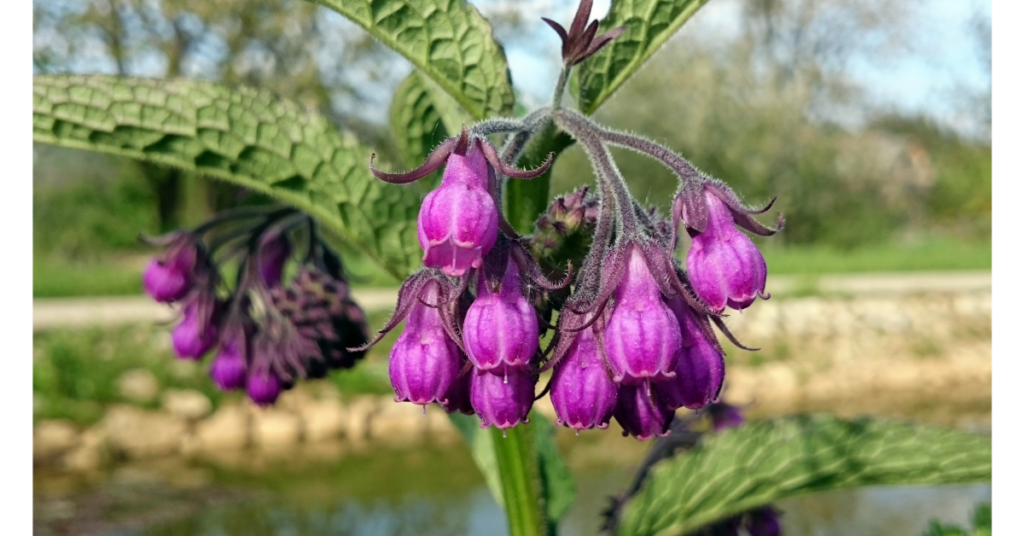Comfrey (Symphytum officinale)
This herb has around 10% more protein in it than Cheddar cheese, which at 35% pure protein makes it fit for human consumption.
The Latin verb ‘conferve’ means to ‘grow together’ or ‘heal together’, hence comfrey’s early common names of knitbone and boneset.
In Africa, it is used as animal feed, and although it is a good source of protein, it is yet to be developed as a human food source in developing countries to date.
Other names: Knitbone, boneset, bruisewort, salsify, wall wort.
Description and the places it grows in
There are both white and purple forms and variations of this perennial plant. It has a glutinous juice in the roots. It is native to Europe and Asia.
Parts used
Root, rhizomes, and leaves.
Uses
Astringent, demulcent, cell-proliferant, vulnerary, weak sedative.
Fractures: The pounded root produces a mucilaginous mass that when dry holds bone together allowing it to repair. Hence the names knitbone and boneset.
Wounds and bruising: If applied to the area in the form of a poultice or compress, it encourages the cell regeneration due to containing allantoin, which promotes the growth of connective tissue, bone and cartilage. This herb also breaks down blood vessels making it ideal to use in the treatment of bruising.
Other uses: It has been used in the treatment of stomach ulcers and diarrhoea, although its use internally is controversial. It should only be administered for internal use under the instruction of a qualified herbalist.
Active ingredients
Coumarins, a glycoside (asperuloside) red dye, tannins, citric acid.
Contraindications
Its use internally is controversial as some believe it contains natural carcinogens. It should only be administered for internal use under the instruction of a qualified herbalist.
If used on wounds where the skin is broken, it should not be used for longer than three days consecutively. Comfrey should not be used by pregnant or lactating women.

